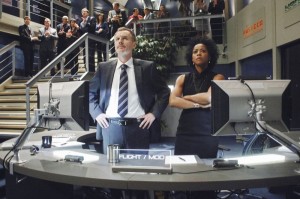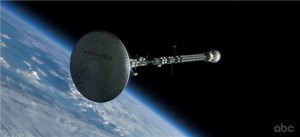What are a long car trip and hosting boring virtual office hours good for? Thinking about how our science and society would be different if the Earth had rings. Science fiction writers, take note.
As I was writing that earlier post, my officemates and I got into a discussion about some of the implications to (at least Western) science and philosophy of such a ring system. One of them suggested that the rings, which would be mostly aligned with the Earth’s equator but would precess with the Moon, would be quite obviously separate from both the purported “celestial spheres” and the Earth, so maybe the ancient Greeks could have dispensed with that destructive Platonic notion much earlier in the history of Western science.
I got thinking and realized that, in addition to their own dynamics, the rings would have a few other obvious effects on the science of those cultures at high enough latitudes to get a good view of the ring system, without seeing them edge-on.
First, the shadows of the Earth and Moon would be visible on the rings. These shadows would be shaped like portions of circles, and would vary in size and shape with time of day, month, and year. From observations of these shadows, easily possible with the naked eye, the Greeks, Egyptians, and Chinese ought to have been able to show without any doubt that the Earth and Moon are spherical. They may have been able to deduce the position of the Earth’s spin axis and axial tilt by comparing the shape of the rings and the shadows on them to the time to year. (These experiments could be quite simple: make a stiff, lightweight circle or hoop, hold it at arm’s length at night, move the circle in and out and tilt it back and forth until its edges line up with the shadow on the ring. Add a little simple geometry, and BAM: I would have just found the axial tilt of the Earth.) They should also have provided some kind of estimate of the distance to the Moon, as observers could compare the size of the Moon with the size of its shadow. And comparing the Earth’s shadow on the rings to the positions of the background stars would have given the ancients an incredibly accurate nighttime clock.
Second, and perhaps most importantly of all, the rings would vary radially in opacity. This would make them beautiful to behold, yes, but it would also give naked-eye astronomers an absolute scale for photometry. Annuli of the rings would block out the light from some stars, but not others. The thicker rings would block more stars than thinner rings, giving a gradation of occultation scales. By comparing which rings block out which stars, observers would have been able to make statements about the relative brightness of the stars with a degree of precision unknown until Christian Huygens arrived on the scene – even surpassing the precision of that experiment. Still more exciting, if the ring was able to occult the Sun, that same method could have been used to measure the light output of the Sun. Now, coupled with the insight that the Sun is a star and a crude estimate of the Earth-Sun distance, an observer should have been able to deduce from naked-eye observations approximate distances to the stars.
I’ll say that again: If the Earth had rings, the ancient Greeks, Chinese, and Egyptians might have had a sense of the scale of the Cosmos. The Romans and Indians might have known what a parsec is.
Furthermore, this photometry could have been used on the visible planets as well as stars. That would have told the ancient astronomers that Mercury, Venus, Mars, Jupiter, and Saturn were a lot closer to the Earth than the stars. In fact, if the ancient photometers tracked the brightness (and, therefore, distance from the Earth) of each planet over time, they would have noticed something interesting: the planets move in circles about a point that is not located within the body of the Earth, but is rather in the Sun. The heliocentric model for the Solar System would have been adopted in ancient times.
Now, knowing that the planets go around the Sun, and the stars are all rather a long way away from the Sun and from each other, ancient astronomers might have realized that other stars could have planets just like the Sun does. Think about what that idea might have done to Western philosophy and religion in their formative years: other Earths? In the sky?! Going around other Suns?
Here’s a possibility I’m not sure about: if the ring was thick enough, it’s possible that it might dim the Sun enough that an observer could safely look at our star with their naked eyes. If so, then sunspots might have been visible to the ancient civilizations. In that case, they might have known that the Sun is not a perfect glowing sphere, and that it rotates. They might have known about the 11-year solar cycle.
And then, imagine what could have happened once Galileo stormed onto the scene with his telescope. When he looked at Saturn, he would have known exactly what he was looking at. “Ears” indeed! By watching Saturn’s rings wax and wane with each Saturnian year, he would have identified the orientation of Saturn’s ringplane to the ecliptic. Knowing that Saturn has rings would have told scientists that Earth’s features are not unique to our own planet.
Early telescopes might have been powerful enough to identify some of the larger rocky chunks making up the Terrestrial rings. Observing their orbits at different radii within the ring could have lent a lot more data to scientists like Kepler and Newton, who were trying to figure out what forces kept the planets in orbit. Armed with data on the orbits of ring particles and Kepler’s Laws, early scientists might have been able to get a pretty good estimate for the mass of the Earth and fix the Earth-Sun and Earth-Moon distances pretty accurately.
I’m thinking that, given how great a dynamical laboratory the Saturnian ring system is, rings around the Earth would have allowed the progress of science to advance much more rapidly, as the rings would provide a precise tool for measurements of position, time, and distance of celestial bodies. If the laws governing those bodies had been puzzled out, say, before Christianity dominated Europe, imagine what society would have resulted….







